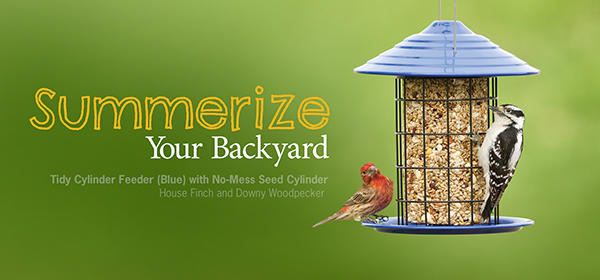
Help Birds Thrive this Season
Summer is the busiest season for birds, making it the perfect time to keep your feeders well-stocked. Research shows that providing a reliable source of high-protein, high-fat and calcium-rich foods can boost nesting success - even for late-season nesters like bluebirds, goldfinches, cardinals and robins.
A diet low in proteins and fats may cause feathers to appear dull or to form defectively such as being frayed or curved. If feathers are duller, birds may have trouble attracting a mate. If the feathers are defective, it could seriously hinder their ability to fly or stay insulated.
Summertime also brings dazzling hummingbirds, vibrant orioles, brilliant goldfinches and the entertaining antics of baby birds figuring out how to feed from feeders.
Keep your feeders full of our exclusive foods like Nesting SuperBlend® and SuperSuet®. Specially formulated to provide essential nutrients during nesting and molting season, these foods provide the ultimate upgrade for birds—and a front-row seat for you to witness their daily wonders.
Shop now and make your yard a place where birds can thrive.

